Today we toured and experienced the history and culture of the city. We were blessed with a wonderful guide, Sokahary and our driver Mor, to get us through the busy streets and sites of Phnom Penh.
We started at The Royal Palace. The palace is a complex of buildings which serves as the royal residence of the King of Cambodia. The Kings have occupied it since it was built in the 1860s, with a period of absence when the country came into turmoil during and after the reign of the Khmer Rouge.
The complex is divided by walls into four main sections. On the south side is the Silver Pagoda, to the north side is the Khemarin Palace and the central compound contains the Throne Hall and to the west is the private sector or the Inner Court. The buildings of the palace were built gradually over time, and some were dismantled and rebuilt as late as the 1960s. The most interesting part of the tour was seeing the golden throne. The throne has only been sat on once, during coronation. It is bad luck to sit on a throne more than once. We also learned there are a series of flags that represent if the king is home and today’s flag was blue, meaning the king was in the palace today.
Following the palace tour, we visited the King Norodom Sihanouk monument. King Sihanouk is known as the Father of Independence. He was crowned in 1941, when Franklin D. Roosevelt was president, and held on to some form of power for the next 60-plus years. He served as monarch, prime minister, figurehead of the Communist revolution, leader in exile, and monarch until he abdicated in 2004. When he died in 2012, it was during a full moon and since he was born during a full moon and the same month he is seen as one of the lucky ones. As a prominent leader and figure in Cambodia’s history, the monument was erected in his honor.
Following a traditional Cambodian lunch, we headed to the Killing Fields to learn about the very somber past of Cambodia. From 1975 to 1979, the Khmer Rouge dictated the country. Led by Pol Pot, the Khmer Rouge pushed Cambodia towards communism which resulted in the killing of 1.5 to 2 million people, nearly a quarter of Cambodia’s population at the time. The killing fields we visited was one of more than 300 around the country. The Khmer Rouge recruited rural, uneducated young people and children to help them eradicate the non-followers, (usually those who were educated and independent), to kill over a million people. The Killing Fields are a memorial of those who lost their lives during those troubled years and serves as a memory for the country of how far they have come since those troubled times.
A final stop of the day was an authentic Cambodian market. One of many around the city, this one called the Totem Pole Market, showcased a variety of items, from fresh fish and meat, to silk scarfs, clothing, artwork and sculptures to basic electronic items. The class enjoyed some time browsing the items and trying out their negotiation skills, bringing home several items for friends, families and loved ones.
The last activity before dinner, called a Cyclo ride, consisted of each class member riding in a cart in front of a bicycle. Twenty-seven bikes wove their way through the city streets with expert drivers as we took in the sights, sounds and smells of the city from a different perspective. The drivers dropped us at our dinner location next to the riverside and we spent the evening reflecting on all we had experienced throughout the day, what we learned, how it made us feel and what we will take away from the hands-on experience in this amazing city.
By Stephanie Loch and Jay Schmidt
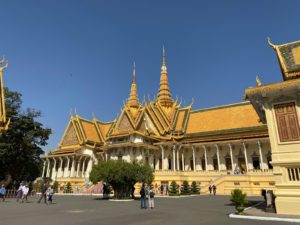
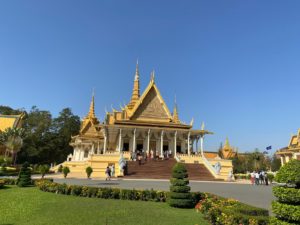
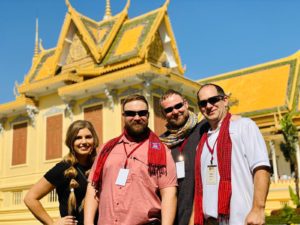
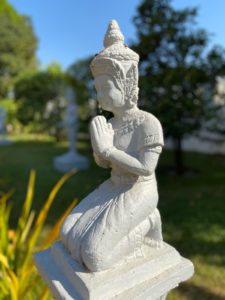

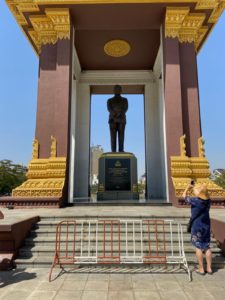
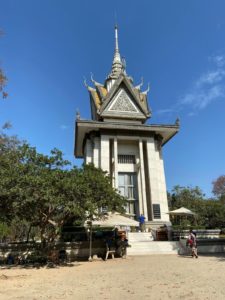
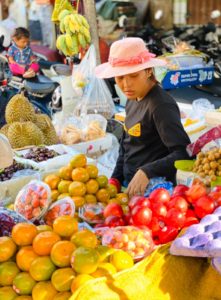
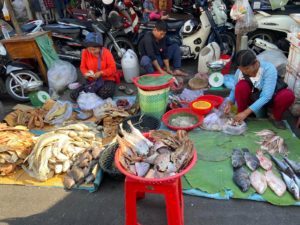
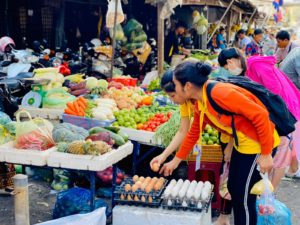
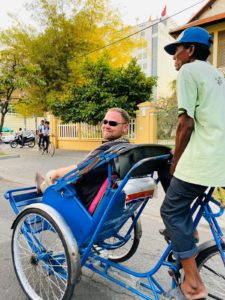
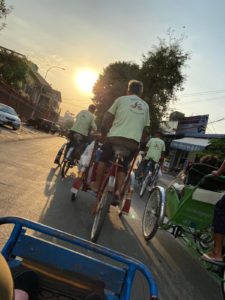
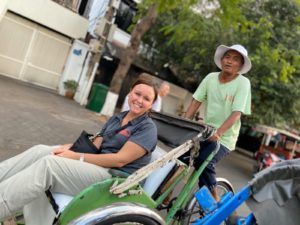
Comments